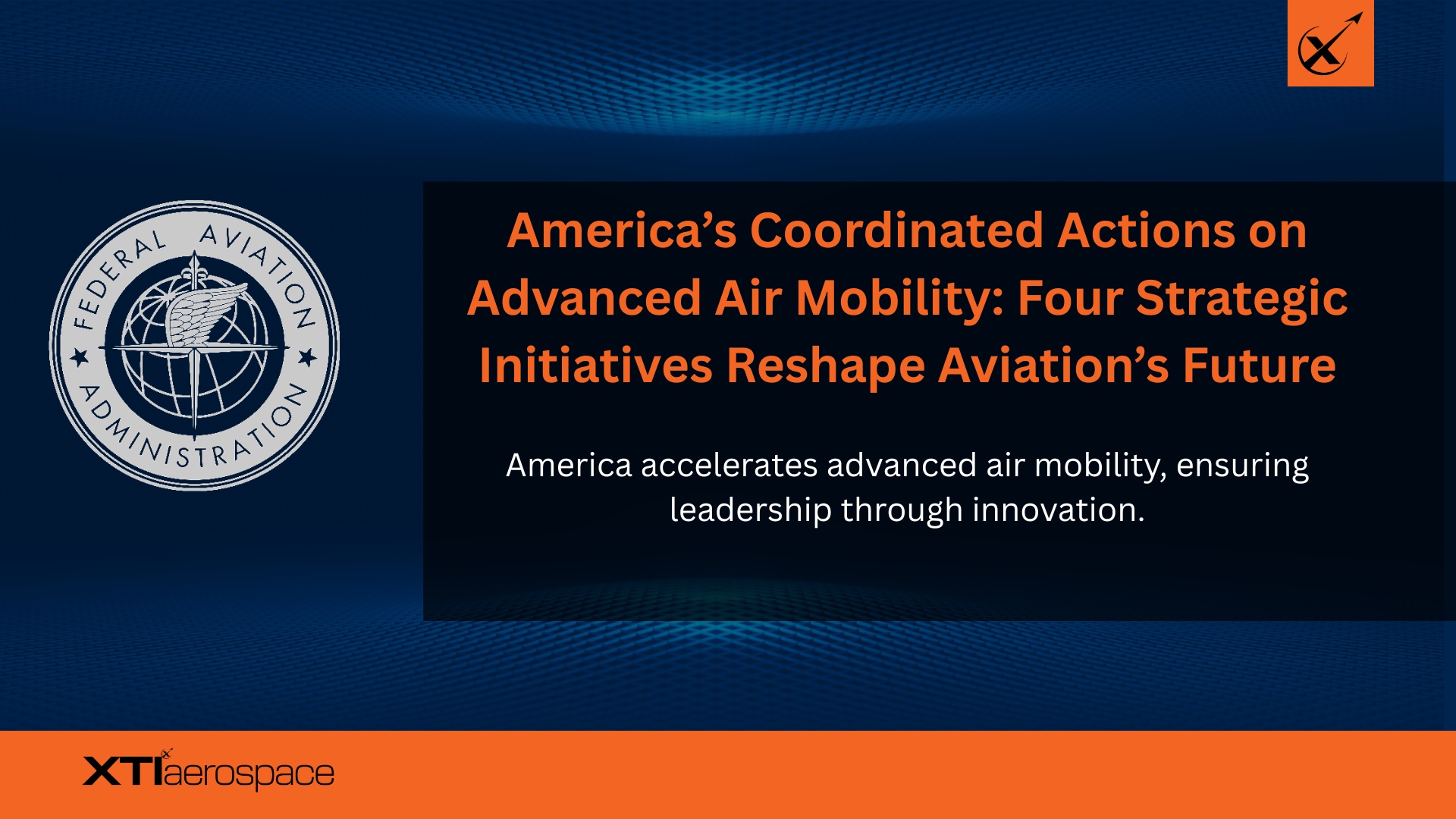September 15, 2025
This administration is moving fast in accelerating the evolution of Advanced Air Mobility (AAM) and Unmanned Air Systems (UAS or drones) in America. This is excellent news for the general public and companies developing Vertical Takeoff and Landing (VTOL) aircraft. The VTOL leaders include Joby, Beta Technologies, Eve, Wisk, Archer, Horizon Aircraft, XTI Aerospace and Elroy Air.
Four specific relevant actions have occurred in the last few months:
- June 6, 2025: President Trump’s Executive Order 14307 “Unleashing American Drone Dominance“.
- August 7, 2025: FAA Part 108 Notice of Proposed Rulemaking for BVLOS (Beyond Visual Line of Sight) for Unmanned Aircraft Systems (UAS) or drones.
- August 7, 2025: The concurrent Part 146 Automated Data Service Provider (ADSP) certification for technology companies that deliver the backend digital services necessary for commercial BVLOS drone operations in US airspace.
- September 11, 2025: The eVTOL Integration Pilot Program (eIPP) announcement – a federally backed initiative by the FAA and U.S. Department of Transportation aimed at accelerating the safe, real-world integration of eVTOL aircraft into the U.S. national airspace.
Given the speed of executive action and the clear prioritization of U.S. companies, we see a recognition that regulatory expediency helps drive technological leadership in rapidly evolving sectors. This suggests lessons have been learned from past government policy hesitation that led to Chinese drone manufacturers’ dominance.
The eIPP Framework: Real-World Testing at Scale
The three-year eIPP initiative represents a significant federal commitment to advanced air mobility (AAM). Previous programs focused primarily on proving aircraft could fly safely. In contrast, the eIPP further demands demonstration of specific use cases delivering tangible public benefits through public-private partnerships.
The program requires state, local, tribal, and territorial governments to partner with U.S.-based private sector companies, creating a framework allowing real-world pre-certification proving flights. At least five projects will be selected through a competitive process, with proposals due by December 11, 2025. The program encompasses short-range air taxis, longer-range regional flights, cargo delivery, emergency services, and autonomous aircraft operations.
Several eVTOL developers including Joby Aviation, Archer Aviation, Beta Technologies, and Wisk Aero have already announced their intent to participate.
This eIPP offers several major advantages:
- Regulatory Fast-Track Opportunity
The eIPP provides an unprecedented pathway for pre-certification operations, allowing companies to demonstrate real-world capabilities before full FAA certification. This “regulatory sandbox” approach enables operational validation without waiting years for traditional certification completion. - Industry Leadership and Export Positioning
The program’s emphasis on U.S.-based aircraft development creates competitive advantages for American manufacturers. Companies participating gain first-mover experience that could translate to international market leadership. - Public-Private Partnership Benefits
The collaborative structure between state/local governments and private companies ensures community buy-in while leveraging private sector innovation. This addresses one of AAM’s key challenges: public acceptance and integration into existing transportation systems.
Some industry concerns include questions on accelerated timelines and on how these flights on aircraft pre-certification will be conducted in real-world operations. Expect this to proceed cautiously, with initial operations in contained sandboxes. These efforts will be followed by expansion as safety and reliability of the aircraft are demonstrated.
A Clear Federal Commitment
The overarching message of these recent actions by the government clearly indicates a pro-innovation shift. While the concerns expressed certainly need to be addressed, the strategic direction is clear. Secretary Duffy’s characterization of AAM as “the next great technological revolution in aviation”, now backed by concrete regulatory action, demonstrates that the United States intends to lead rather than follow in advanced air mobility commercialization.
Market Validation and Investor Confidence
Stock prices for Joby and Archer rose immediately following the eIPP announcement, reflecting investor confidence in these accelerated commercialization pathways. The eIPP program provides concrete operational data that could support future funding rounds and business development.
Conclusion
The message is unmistakable: America will not cede another emerging aviation sector to international competitors. Through strategic federal commitment and coordinated regulatory action, the United States is building the framework for sustained leadership in advanced air mobility.

